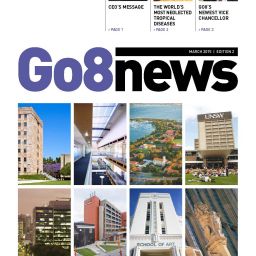January 22, 2015
The Australian, 19 January 2015
by Julie Hare
TWO out of every five students with a tertiary admission rank of 50 or lower who applied for university last year were offered a place, a figure that has quadrupled since 2009, when the figure was one in 10.
The trend can be expected to continue this year, with preliminary government data showing university applications are at similar levels to last year, with school-leavers showing little or no resistance to applying for university in the wake of the federal government’s proposals to deregulate fees next year.
That proposal, along with a raft of other higher-education reforms, was rejected by the Senate last month but will be reintroduced by Education Minister Christopher Pyne early this year.
The 2014 report of university applications and acceptances also shows more than 80 per cent of students who applied for university who had an ATAR of between just 50 and 60 were offered a place, up from 56 per cent in 2009.
As in previous years, the highest proportion of offers to students with ATARs of 60 or lower were in the areas of teacher education and information technology.
The growth in enrolments of school-leavers with ATARs of 60 and lower started in 2010, after the Rudd government progressively uncapped places to try to increase the proportion of young people holding a degree to 40 per cent.
That target has been abandoned by the Abbott government, as has another to increase to 20 per cent the proportion of the most economically disadvantaged with a degree. While critics say the influx of poorly prepared undergraduates is compromising the quality on offer in some universities, others say it gives students an opportunity to benefit from higher education otherwise unavailable to them.
Andrew Norton, a higher education policy expert with the Grattan Institute, said while more than 7000 offers had been made to students with ATARs under 50 in 2014 — up from 2000 in 2009 — only half were accepted. He said many who accepted dropped out within the first six weeks.
Of those who continued, more than half would drop out by the end of the first year, he said.
While reporting of ATARs by the state admissions centres is patchy at best, the Victorian Tertiary Admissions Centre shows that in 2014 Federation University of Australia’s Mount Helen campus accepted students with ATARs of 32.65 into its IT course. FUA, formerly the University of Ballarat, also accepted ATARs of 33.2 for criminal justice, 33.68 for science at Gippsland and 40.24 for primary teaching at Ballarat.
Vicki Thomson, the chief executive of the Group of Eight which represents the most elite universities, said the trend toward increasing numbers of low-ATAR students being accepted into degrees was of concern.
“It reinforces why the funding of pathways programs remains critical,’’ Ms Thomson said.
“Many of these students are entering university directly because there is a funding system to allow this. They should be entering university through a preparatory pathway but the system effectively discourages this.
“Importantly, we don’t want to set people up to fail, which is why the use of pathways is so critical.”
One little-discussed element of Mr Pyne’s higher-education reform program is a proposal to extend government subsidies to pathway or sub-degree programs aimed at establishing the academic skills necessary to succeed as an undergraduate.
This reform would help take pressure off universities’ push to over-enrol underqualified students in order to gain government funding.
Research by Mr Norton has shown that school-leavers who enter university with an ATAR of 90 or higher have a 90 per cent chance of completing their degree. However, completion rates fall in a corresponding line with lower ATARs, with those below 60 having a one-in-three chance of dropping out.
However, the deputy vice-chancellor (academic) at Federation University, Marcia Devlin, dismissed Mr Norton’s findings, saying dropping out did not necessarily equate with “poor performance”. “Many still eventually get a degree and employers aren’t always focused on grades,’’ she said. “I’m worried about the mental-health implications of demonising students who aren’t and can’t be in the top percentage and feel like failures because of it.”
Similar Story:
ABIX http://abix.com.au/2015/01/19/unis-ramp-up-offers-to-lowest-tier/





